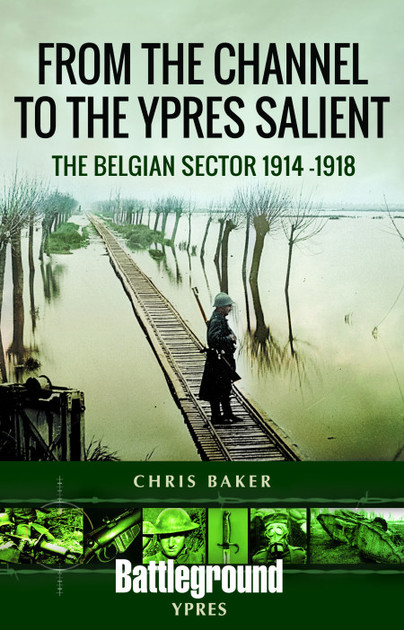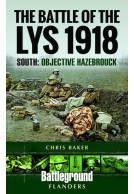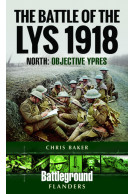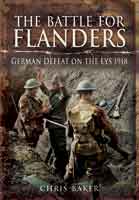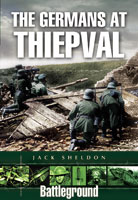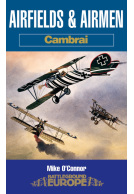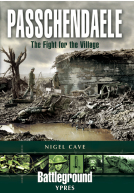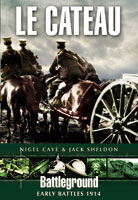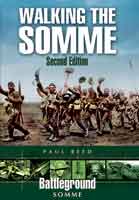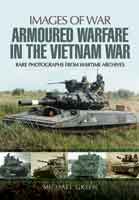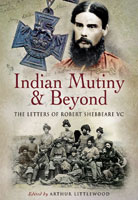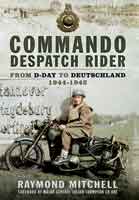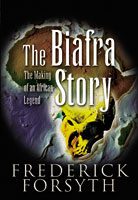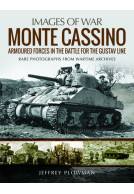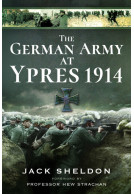From the Channel to the Ypres Salient (Paperback)
The Belgian Sector 1914 -1918
Imprint: Pen & Sword Military
Series: Battleground: WWI
Pages: 272
Illustrations: 100 black and white illustrations
ISBN: 9781526749314
Published: 18th August 2021
(click here for international delivery rates)
Need a currency converter? Check XE.com for live rates
| Other formats available | Price |
|---|---|
| From the Channel to the Ypres… ePub (65.5 MB) Add to Basket | £6.99 |
The sector north of Ypres is best known for the inundation of much of the ground to the east of the Yser that acted as a block to the German advance in the autumn of 1914. From that time on military activities were extremely limited. Much of this line was manned by Belgian troops, with some assistance from the French army at its southern end and of the British army on the Channel coast.
The role of the Belgian army in the Great War is little known, apart from the opening months, when 'brave little Belgium' held on to its important fortified cities, notably Liege and Antwerp, for longer than German planning had anticipated. It was not until mid October 1914 that the Belgian army was forced back to the area of the Yser, when its defences were bolstered by French troops whilst Haig's I Corps came up on its southern flank.
At this crucial phase of the campaign, the harsh decision was taken to open the dykes at the end of October 1914 and thereby flooding much of the low lying ground east of the Yser and so effectively halting major German offensive operations.
For almost four years the Belgian army rested reasonably secure behind this sodden landscape, although certain key points were the scene of frequent, if limited, tussles. 'Free' Belgium was reduced to two significant towns that could be regarded as secure and out of the range of most German artillery - the coastal resort of La Panne (De Panne) and the much bigger settlement of Furnes (Veurne),
Over these years the Belgian army was rebuilt under the dynamic leadership of the king, Albert I, and by the time of the general allied advance in September 1918, the Belgian army was able to take its place in the Advance to Victory, in an allied Army that was commanded by King Albert. Although this phase of the war is outside the scope of the book, it is important to realise that the Belgian army was a very active player in these last few months. Amongst the achievements of Belgian troops at this stage of the war was the final capture of Passchendaele.
This book concerns itself with the years of defence and the reconstruction of the army behind the Yser. Relatively little of Belgium's efforts in the Great War remained, but recent years have seen action to preserve what does. Most significant of these, perhaps, is the so called Trench of Death near Diksmuide. Although always preserved, it has recently been very successfully refurbished and is now most effectively and informatively presented. Other remains from the war have also been developed so as to be more informative and the result is that touring this area provides a fascinating insight into one of the most unusual sectors of the Western Front and which is conveniently close to the much visited Ypres Salient.
In this book Chris Baker brings his extensive knowledge of the Belgian army (helped by his ability to read French and Dutch) and of the Flanders region to produce a much needed insight into Belgium's army role for most of the war as the protector of the northern flank of the whole of the Allied line.
Anyone with an interest in the course of WW1 on the ground, as well as that in the air, may find this book, one of an extensive series of similar titles covering the whole of the Western Front, to be of interest.
Cross and Cockade
Another superb addition to the Battleground series.
WW1 Geek
Read the full review here
This work by Chris Baker breaks new ground in the coverage of the First World War through Battleground Europe, with a focus on the experience of the Belgian army. The geographical range of the book covers from the North Sea coast, down to the very edge of the Ypres Salient. The time period incorporated goes from the very start of the war, right to the late operations in September 1918. It is an aspect of the war which, for many of those interested in it, will be less familiar, unless they dig deep and look to further reading. Thanks to the author, this aspect has been given vital coverage. The geographical area covered stretches from the north of Ypres, up the Yser-Ypres Canal, through West Flanders to the North Sea, through the River Yeser, to Disksmuide and Nieuwpoort...
Jon Sandison
Throughout there are detailed maps, which provided that crucial context to the content, alongside remarkable visual photographs. Just one of these photographs shows Belgian troops during mobilisation in August, 1914, from 'The Sphere', whilst another shows Belgian front line trenches dug into the Yser Dyke. If you are heading to Belgium to study the battlefields, this is another 'must' book, to pack in your bag!
This fact-laden book offers much to serious historians, buffs and battlefield trekkers. It is recommended highly.
Over the Front - Spring 2022 issue
The ‘guide’ section of the book is very useful, giving well set out and easy to follow tours which enable a new perspective to be discovered, and close to Ypres too. It’s well worth taking the time to experience this important sector of the front and this book will prove indispensable if you do so.
David Barras - Western Front Association - Northumberland branch
When any book comes out from Chris Baker, you are confident that it will be a quality read. This volume of the Belgian sector brings to light an often overlooked section of the front. The contribution of the Belgian Forces to the war effort of frequently lost due to our Anglo-centric view of the battlefields of Belgium.. This book does a good job to dispel the view that once the sluice gates were opened this section of the front was secure and nothing happened. The tours detailed in the book look interesting and will defiantly form part of my future trips.
Western Front Association - Hampshire & Isle of Wight Branch
Genuinely new research & highly recommended to get you visiting a fascinating sector of the Western Front.
Twitter, @sommecourt
Read the full review via Twitter
This book has taken the author many years of hard work and research to complete, from his first visits back in the 80s, he has immersed himself in the history of Belgium, learning about its geography, art, culture, architecture, food, and language, although a relatively small country it has a complex make up and several almost tribal divisions of language and culture, all of which one needs to understand when learning about the country's reaction to the German invasion.
ARRSE (Army Rumour Service)
5 stars
Read the full review here
Sometimes a book comes along that makes you think ‘why hasn’t this been done before’ and that’s exactly how I feel about ‘From the Channel to the Ypres Salient’. The role of the Belgian army in the First World War has long been overlooked, and I myself was shamefully ignorant about their actions along the Yser before reading this book. Aimed at the British reader it has everything we’ve come to expect from an excellent Battleground Europe publication – extensive research, an expert narrative of what unfolded and a detailed on the ground guide. I can’t wait to get back to Belgium and explore these areas, fully equipped with Chris’ incomparable knowledge.
Guild of Battlefield Guides
New in the Battleground Ypres series of guides, this covers the Belgian Sector 1914-1918, north from Ypres to the North Sea coast. A 257-page soft-cover battlefield guide, providing the historical background along with a number of tours described in detail. A little different from the other books in the Battleground Great War series, as this focusses in particular on the story of the Belgian Army during the war.
Military Model Scene
Read the full review here
An excellent delivery of history and tour book by a recognised expert on the area. Essential reading for anybody wanting to brush up on the subject or planning a visit.
Michael McCarthy
Michael McCarthy. Battlefield Guide
About Chris Baker
Chris Baker is a former Chartered Engineer and manufacturing consultant, whose deep interest in the Great War led him to becoming a professional military historian. He is behind a research business, fourteeneighteen, and is the author of the well-known and invaluable website The Long, Long Trail.
Chris was the Chairman of the Western Front Association for a number of years and was the founder of the very successful internet Great War Forum. Chris’s book The Battle for Flanders: German defeat on the Lys, 1918 was published by Pen & Sword Military in 2011. In 2014 The truce: the day the war stopped was published by Amberley. He has also written two Battleground Europe books on the Battle of the Lys 1918 (2018).
Chris is an honorary Research Fellow at the University of Birmingham, where he gained a Masters in British First World War History in 2007.
He has spent much time over the years in Flanders. His work for this book has been notably assisted by his knowledge of the Belgian military archives and by his ability to read both Dutch and French.







